3RD TERM
3RD TERM
SCHEME OF WORK
WEEK TOPIC
1. Revision/Farm Animal Husbandry: Definition and system of farm animal husbandry
2. Management Requirement in Animal Husbandry: Housing, feeding, hygiene and medication, weaning, rearing to maturity and marketing
3. Farm animal parasites: Definition and classification of parasites
4. Methods of control of animal parasites
5. Disease causing organisms: Definition, classification and basic symptoms
6. Mode of transmission of disease causing organisms
7. Crop plant diseases: Definition, Examples and mode of transmission and symptoms.
8. Crop plant diseases: Effects, Symptoms and Prevention and Control methods
9. Storage of farm produce: Definition and Types of storage of farm produce
10. Development of Agriculture in Nigeria: a. stages and problems of agricultural development in Nigeria b. Application of science and technology in agriculture.
11. Revision
WEEK TOPIC
1. Revision/Farm Animal Husbandry: Definition and system of farm animal husbandry
2. Management Requirement in Animal Husbandry: Housing, feeding, hygiene and medication, weaning, rearing to maturity and marketing
3. Farm animal parasites: Definition and classification of parasites
4. Methods of control of animal parasites
5. Disease causing organisms: Definition, classification and basic symptoms
6. Mode of transmission of disease causing organisms
7. Crop plant diseases: Definition, Examples and mode of transmission and symptoms.
8. Crop plant diseases: Effects, Symptoms and Prevention and Control methods
9. Storage of farm produce: Definition and Types of storage of farm produce
10. Development of Agriculture in Nigeria: a. stages and problems of agricultural development in Nigeria b. Application of science and technology in agriculture.
11. Revision
WEEK 1
TOPIC: FARM ANIMAL HUSBANDRY
CONTENTS: i. Definition of farm animal husbandry
ii. Systems of farm animal husbandry
iii. Merits and demerits of each system
SUB-TOPIC 1: DEFINITION OF FARM ANIMAL HUSBANDRY
Farm animal husbandry refers to the science and art of producing and keeping livestock such as cattle, sheep, goat, pig and poultry. Others include snail, fish, grass cutter etc. Farm animals are managed and kept for the provision of products such as meat, milk, eggs, bones, wool, hide and skin etc.

SUB-TOPIC 2: SYSTEMS OF FARM ANIMAL HUSBANDRY
System of farm animal husbandry refers to an extent to which animals are exposed to sunlight, vegetation and housing. The systems of livestock management include:
a. Extensive system
b. Intensive system
c. Semi-intensive system.
1. EXTENSIVE SYSTEM: This is the most common system for rearing ruminants especially goat and sheep. It is a system in which animals are allowed to roam about and feed on pasture during the day while shelter is provided at night for protection and parturition. It is otherwise known as traditional system, open/free range system. Tethering is a method under extensive system whereby the animals (especially goats) are tied to stake/peg in order to ensure grazing and protection of crops from these animals. This system can be fully practiced where land is in abundance.
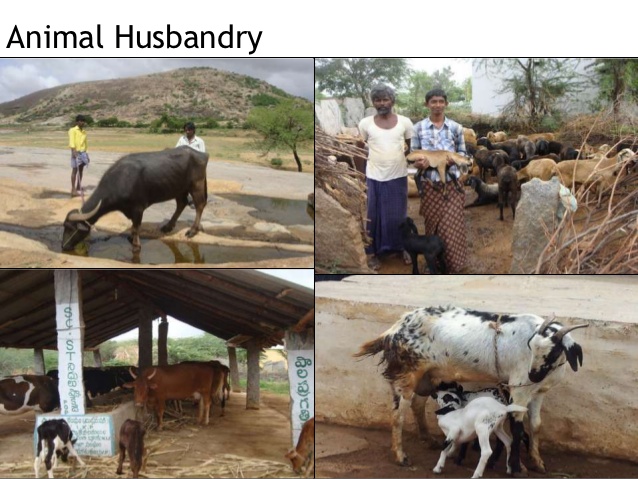
2. INTENSIVE SYSTEM: This system is practiced where land is scarce and in a dense populated areas. It involves continuous housing or zero grazing. The animals are kept in-door all the year round. Water, feeds and medication are provided since the animals have no access to natural vegetation as those raised under extensive and semi-intensive systems. This system is best practiced for raising poultry, pigs, rabbit etc. Under poultry, intensive system is sub-divided into three:
i. Deep litter
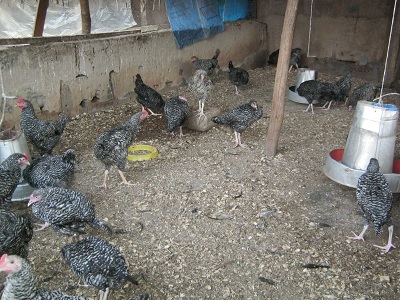
ii. Battery cage

iii. Fold systems.

3. SEMI-INTENSIVE SYSTEM: This involves combination of gazing on fenced and improved pastures and supplementation with concentrate feeds. In this system, goats may be tethered in order to avoid fencing. Houses are provided within the fence with attached paddocks for grazing during the day. Some attention is given to feeding, housing and health.
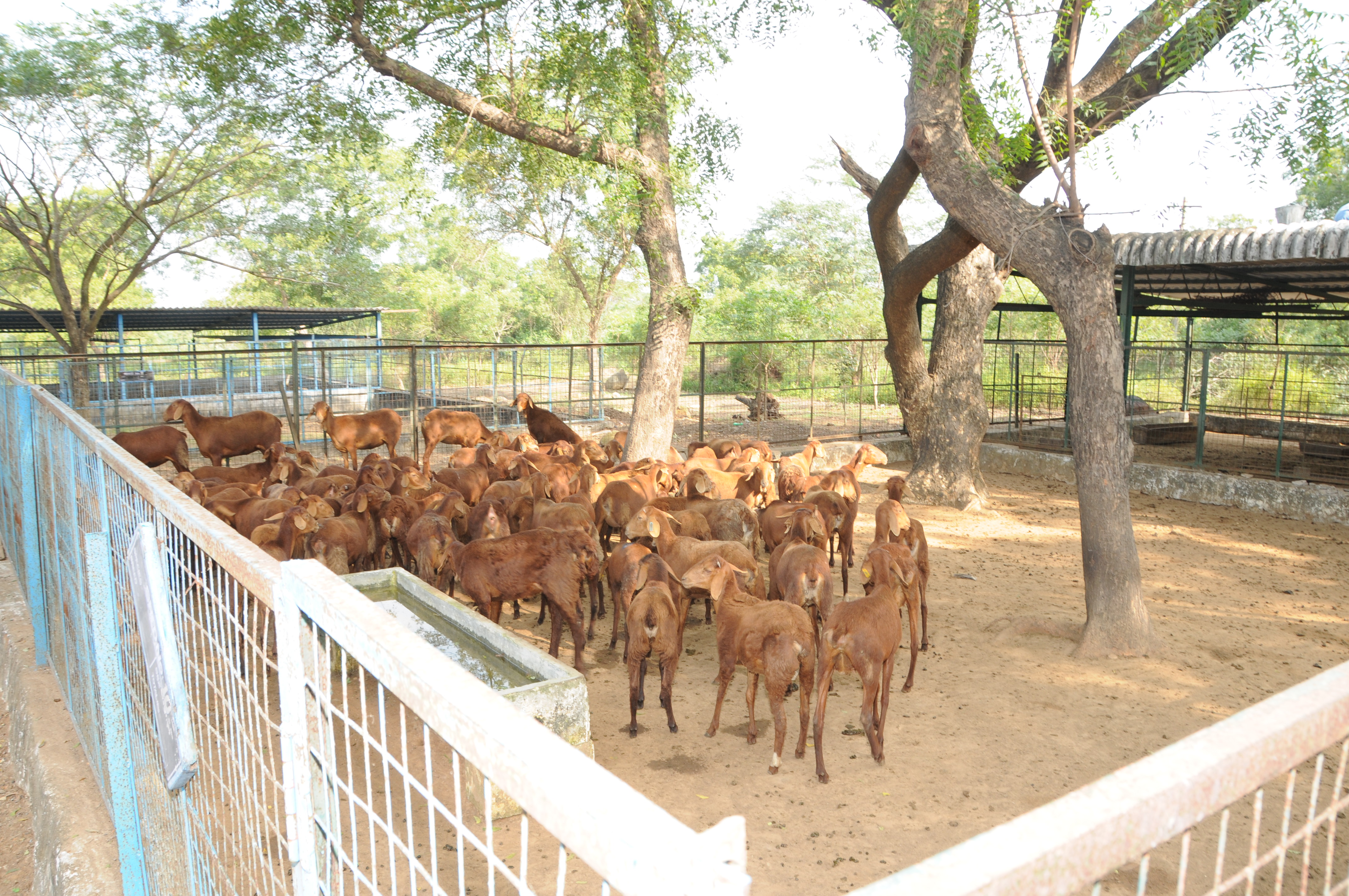
EVALUATION
1. What do you understand by farm animal husbandry?
2. State the three systems of livestock management
3. Mention three animals that can be raised successfully under extensive system.
4. List two factors that necessitate intensive system of livestock management.
5. Which of the livestock management system is the best?
SUB-TOPIC 3: MERITS AND DEMERITS OF EACH SYSTEM.
A. Advantages of Extensive system.
1. Initial capital and cost of production is low.
2. The animals have access to sunlight, vegetation and exercise
3. It does not involve much labour
Disadvantages of Extensive system
1. Animals are exposed to bad climatic conditions
2. The animals are prone to losses through thieves, snake bites and disease attack.
3. The animals can destroy crops if not properly managed.
B. Advantages of Intensive system
1. The animals are protected from bad weather conditions, thieves and other enemies.
2. There is adequate use of land and labour.
3. Proper management practices (like breeding, culling, pest and disease control, debeaking etc) are observed.
4. The production is high.
5. Large number of animals can be raised.
Disadvantages of Intensive system
1. It requires high capital investment for housing, feeding and medication.
2. There is lack of access to vegetation, sunlight and exercise.
3. Diseases and pests spread easily among the animals.
4. There is high incident of vices like cannibalism, pecking, egg sucking etc.
C. Advantages of Semi-intensive system
1. It affords protection from thieves, predators and bad weather conditions.
2. Animals are provided with house, little feeds and access to sunlight, vegetation and exercise.
3. The cost of feeding, housing and health-care is low.
Disadvantages of Semi-intensive system
1. Proper management practices (culling, breeding etc) are not observed.
2. Feeding is not controlled.
3. Production is low.
EVALUATION
1. State three merits of intensive system.
2. Mention two demerits of extensive system.
3. The system that combined extensive and intensive systems together in one is………
ASSIGNMENT
Junior Secondary Agriculture Workbook 2 chapter 10, No 1-25 by Anthony et al
READING ASSIGNMENT
Junior Secondary Agriculture book 2 pages 116-130
REFERENCE TEXTS
1. Junior Secondary Agriculture for Nigerian Schools by Anthony et al.
2. Essential of Agricultural Science for JSS by EC Anie.
CONTENTS: i. Definition of farm animal husbandry
ii. Systems of farm animal husbandry
iii. Merits and demerits of each system
SUB-TOPIC 1: DEFINITION OF FARM ANIMAL HUSBANDRY
Farm animal husbandry refers to the science and art of producing and keeping livestock such as cattle, sheep, goat, pig and poultry. Others include snail, fish, grass cutter etc. Farm animals are managed and kept for the provision of products such as meat, milk, eggs, bones, wool, hide and skin etc.

SUB-TOPIC 2: SYSTEMS OF FARM ANIMAL HUSBANDRY
System of farm animal husbandry refers to an extent to which animals are exposed to sunlight, vegetation and housing. The systems of livestock management include:
a. Extensive system
b. Intensive system
c. Semi-intensive system.
1. EXTENSIVE SYSTEM: This is the most common system for rearing ruminants especially goat and sheep. It is a system in which animals are allowed to roam about and feed on pasture during the day while shelter is provided at night for protection and parturition. It is otherwise known as traditional system, open/free range system. Tethering is a method under extensive system whereby the animals (especially goats) are tied to stake/peg in order to ensure grazing and protection of crops from these animals. This system can be fully practiced where land is in abundance.

2. INTENSIVE SYSTEM: This system is practiced where land is scarce and in a dense populated areas. It involves continuous housing or zero grazing. The animals are kept in-door all the year round. Water, feeds and medication are provided since the animals have no access to natural vegetation as those raised under extensive and semi-intensive systems. This system is best practiced for raising poultry, pigs, rabbit etc. Under poultry, intensive system is sub-divided into three:
i. Deep litter

ii. Battery cage

iii. Fold systems.

3. SEMI-INTENSIVE SYSTEM: This involves combination of gazing on fenced and improved pastures and supplementation with concentrate feeds. In this system, goats may be tethered in order to avoid fencing. Houses are provided within the fence with attached paddocks for grazing during the day. Some attention is given to feeding, housing and health.

EVALUATION
1. What do you understand by farm animal husbandry?
2. State the three systems of livestock management
3. Mention three animals that can be raised successfully under extensive system.
4. List two factors that necessitate intensive system of livestock management.
5. Which of the livestock management system is the best?
SUB-TOPIC 3: MERITS AND DEMERITS OF EACH SYSTEM.
A. Advantages of Extensive system.
1. Initial capital and cost of production is low.
2. The animals have access to sunlight, vegetation and exercise
3. It does not involve much labour
Disadvantages of Extensive system
1. Animals are exposed to bad climatic conditions
2. The animals are prone to losses through thieves, snake bites and disease attack.
3. The animals can destroy crops if not properly managed.
B. Advantages of Intensive system
1. The animals are protected from bad weather conditions, thieves and other enemies.
2. There is adequate use of land and labour.
3. Proper management practices (like breeding, culling, pest and disease control, debeaking etc) are observed.
4. The production is high.
5. Large number of animals can be raised.
Disadvantages of Intensive system
1. It requires high capital investment for housing, feeding and medication.
2. There is lack of access to vegetation, sunlight and exercise.
3. Diseases and pests spread easily among the animals.
4. There is high incident of vices like cannibalism, pecking, egg sucking etc.
C. Advantages of Semi-intensive system
1. It affords protection from thieves, predators and bad weather conditions.
2. Animals are provided with house, little feeds and access to sunlight, vegetation and exercise.
3. The cost of feeding, housing and health-care is low.
Disadvantages of Semi-intensive system
1. Proper management practices (culling, breeding etc) are not observed.
2. Feeding is not controlled.
3. Production is low.
EVALUATION
1. State three merits of intensive system.
2. Mention two demerits of extensive system.
3. The system that combined extensive and intensive systems together in one is………
ASSIGNMENT
Junior Secondary Agriculture Workbook 2 chapter 10, No 1-25 by Anthony et al
READING ASSIGNMENT
Junior Secondary Agriculture book 2 pages 116-130
REFERENCE TEXTS
1. Junior Secondary Agriculture for Nigerian Schools by Anthony et al.
2. Essential of Agricultural Science for JSS by EC Anie.
WEEK 2
TOPIC: MANAGEMENT REQUIREMENT IN ANIMAL HUSBANDRY.
CONTENTS: i. Housing and Feeding
ii. Hygiene and Medication
iii. Rearing of Farm animals to maturity
SUB-TOPIC 1: HOUSING AND FEEDING
For effective production of farm animals, it is important to have convenient and durable buildings, good feeds and equipments.
HOUSING: Ruminants such as cattle, sheep and goats do not require special housing. However, under intensive system, they are provided with barns, sheds/shelter and fences to protect them from adverse weather conditions such as severe cold, heat, wind and rain; it also protect them from thieves, straying and keep the incidence of pests and diseases at barest minimum.
Non-ruminant animals such as pig, poultry etc require well-built houses of which floor are made of concrete (to control internal parasites) and roof made of iron or asbestos sheet. There are three types of housing in pig management. They are farrowing house, breeding house and fattening house. For poultry, we have brooder house for rearing chicks, growers’ house for raising growers and deep litter/battery cages for rearing growers and layers respectfully. In rabbit management, well-ventilated and properly lighted houses called hutches (constructed of wire mesh, wood or both) are provided to keep them from cold, wind, heat and rain.
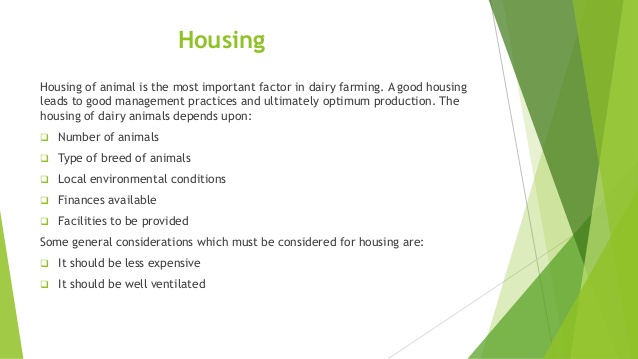
FEEDING: Farm animals require good feeding for optimum production. They need all essential feed nutrients for growth, good health and productivity. Different farm animals require different feeds at different times depending on: a. purpose of production b. digestive system c. age d. cost of feed e. seasons of growth f. stage of growth/development.
Ruminant animals grow well on pasture because of their complex stomach and the presence of bacteria in their rumen which can digest forages. However, concentrate feed and supplements should be given them to improve their production.
Non-ruminant animals on the other hand need concentrate feed because of their simple stomach that cannot digest roughages. Creep feed/pellets, weaners mash, lactating ration, flushing/steaming up, fatteners/finishers mash and breeders mash are examples of concentrates for feeding pigs. Chicks mash, Growers mash, Layers mash, Broilers starter and Broilers finisher are examples of poultry feeds.
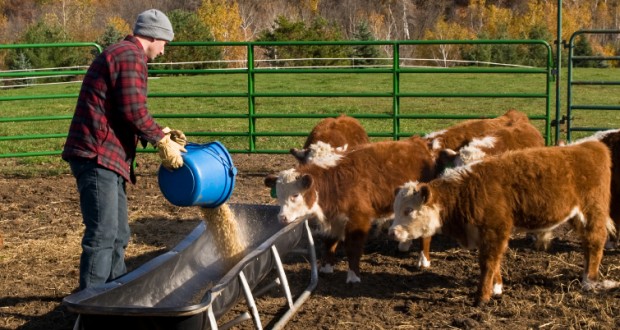
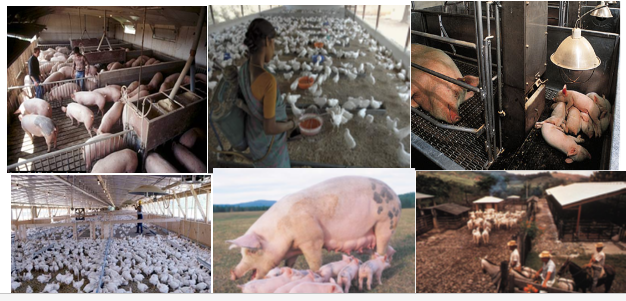
FEEDING/REARING EQUIPMENT
CATTLE: These include shade, stock, breeding rack, dipping vat/spraying equipment, calf creep, mineral feeder, scales and silos.
SHEEP/GOAT: These are grain trough, water trough and dipping vat.
POULTRY: Water trough, feeding trough, grit container, dip equipment, brooder, incubators
PIG: Wallow, feeding trough, water trough, brooder.
EVALUATION
1. State three houses for cattle, sheep and goat.
2. The well-ventilated house for rearing rabbit is known as……
3. List five factors that determine feeding of farm animals.
SUB-TOPIC 2: HYGIENE AND MEDICATION
In livestock farming, emphasis is placed on prevention rather than cure/control. This is to prevent economic loss and time wastage. All farm animals should therefore be provided with clean and well-ventilated housing, dry bedding and good feeds. The following are preventive measures to be taken:
1. Animals’ pens, feeding and water troughs should be cleaned daily.
2. Examine the animals regularly for any sign of pests and diseases.
3. Vaccinate the animals at the appropriate time against viral and bacterial diseases.
4. Isolate the sick/diseased animals from the healthy ones.
5. Disinfect the pens at regular interval especially before the arrival of new stock.
6. Deworm the animals against endo-parasites and delouse/spray them against ecto-parasites.
7. Remove and burn/bury the dead animals.
8. Contact Vet doctor in case of serious disease infection.
9. Remove contaminated feed, beddings and faeces from the pen.
10. Debeak the birds to prevent pecking and egg-sucking.


EVALUATION
1. Why is prevention better than cure?
2. State five preventive measures to be observed in by livestock farmers.
3. Who is the specialist in treating animals’ diseases?
SUB-TOPIC 3: REARING OF FARM ANIMALS TO MATURITY
Rearing is the sum total of all the activities or processes involved in bringing farm animals to maturing. These processes include:
1. For mammals such as cattle, sheep, goat, pig, rabbit etc, rearing involve three major periods
i. Breeding (mating and pregnancy period) to parturition (production of young ones).
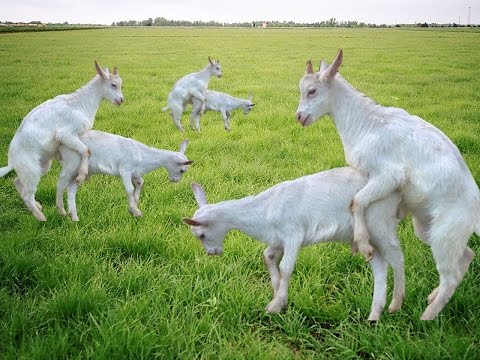
ii. Calves/lambs/kids/piglets/kittens to weaning.(Routine management practices like dehorning, tattooing[branding], castration etc) are carried out during this period.

iii. Weaning to finishing/fattening.
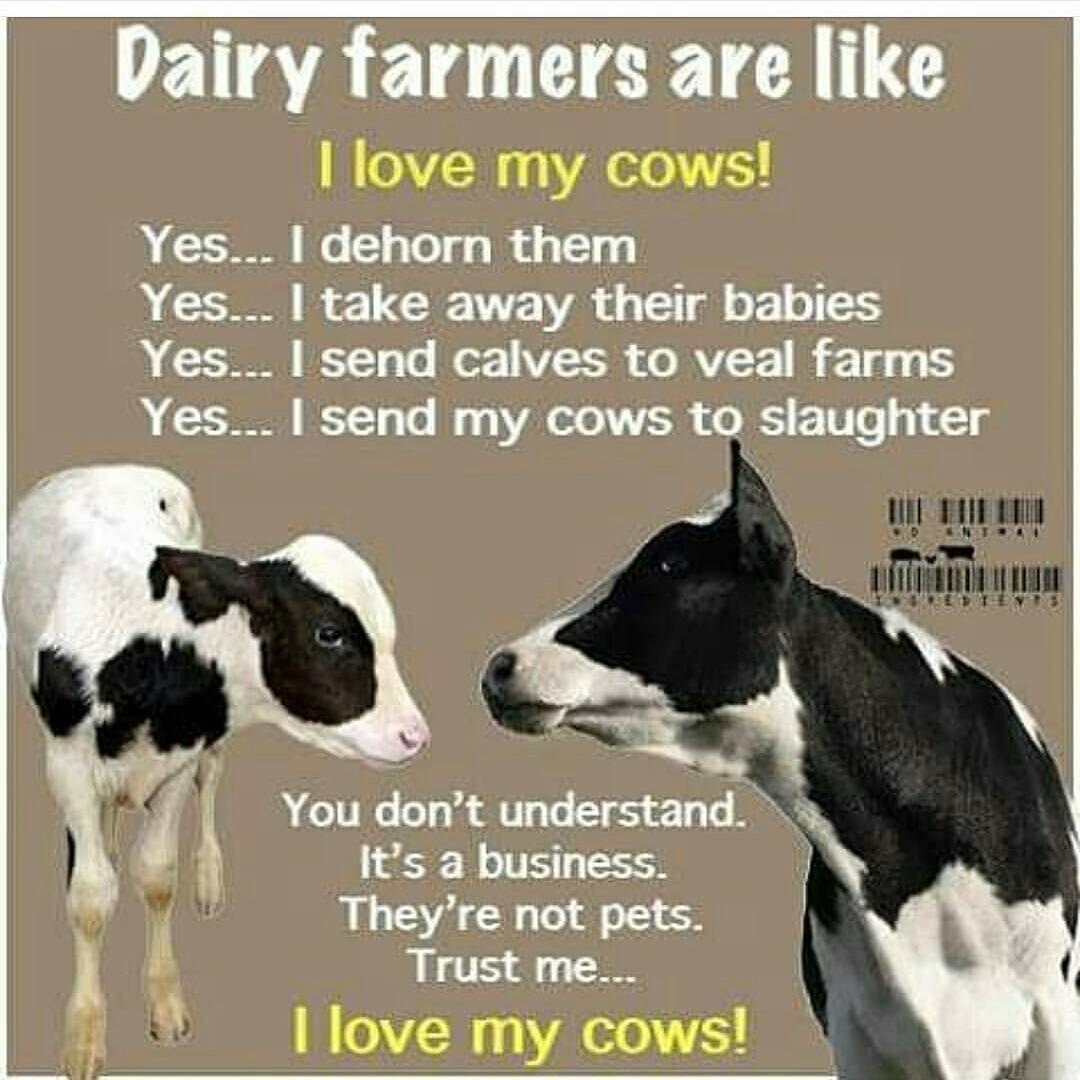
2. For non-mammals like poultry, rearing involves
i. Breeding (mating and laying of eggs).
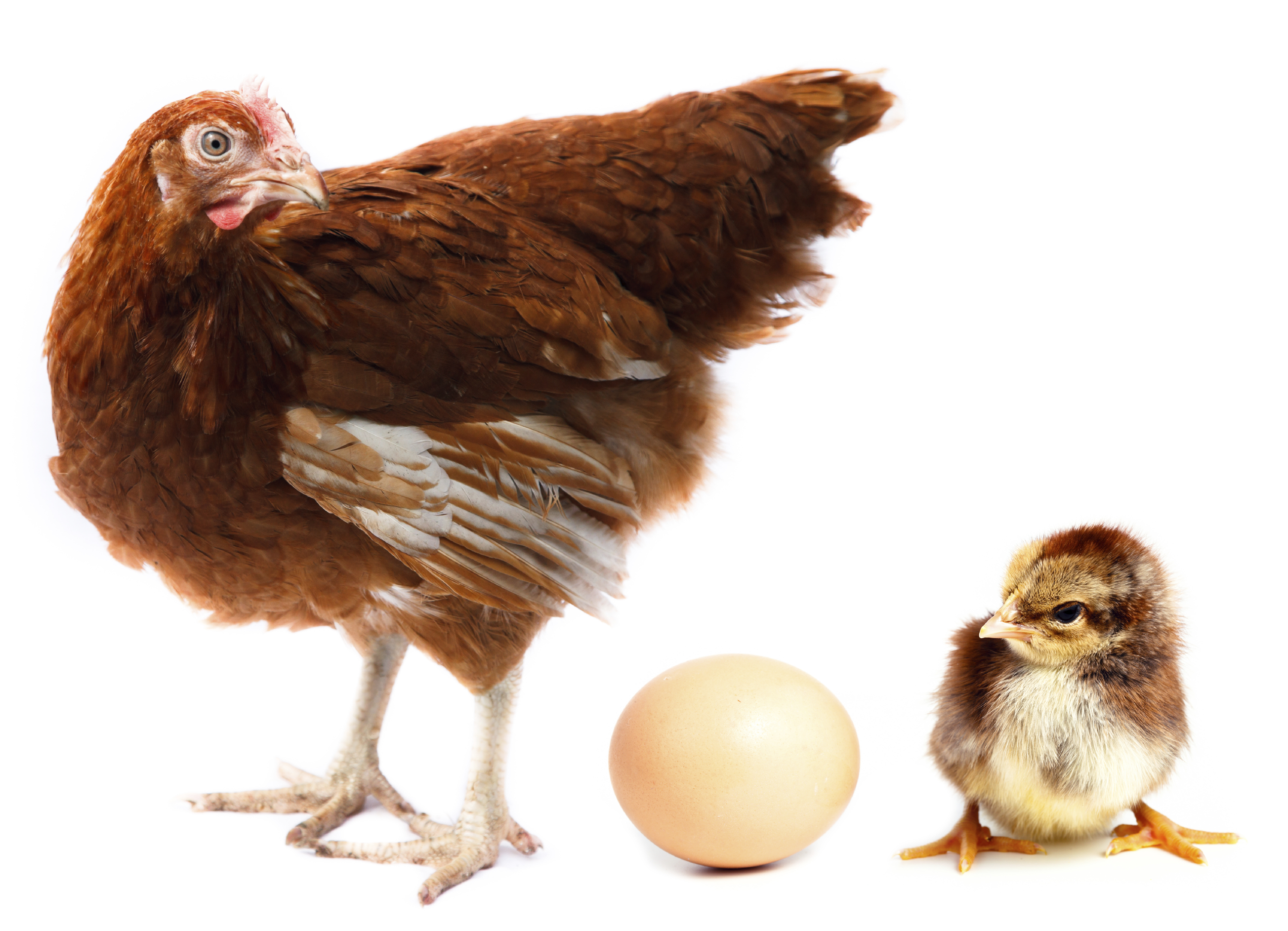
ii. Incubation and candling.

iii. Hatching and sexing.
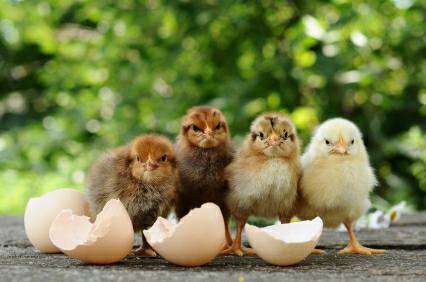
iv. Brooding.(Rearing of chicks i.e pullet chicks and or broiler chicks in deep litter houses)

v. Grower and finisher stage (Rear in deeper litter houses).
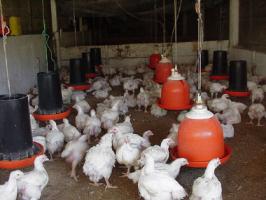
vi. Layers stage (Rear in battery cages).

MATURITY AGE AND MARKET SIZE/WEIGHT OF FARM ANIMALS
Animals Age (months) Weight (kg)
Cattle 12-20 200-360
Sheep 8-12 35-45
Goat 10-14 40-60
Pig 7 60-70
Rabbit 4-6 4-5
Poultry 9-12 weeks 2.5-3
MARKETING OF LIVESTOCK AND LIVESTOCK PRODUCTS
In most West African countries including Nigeria, the Northern part supplies the major quantity of meat consumed by the South. Live animals are slaughtered, dressed and frozen/processed and sold for consumption. The marketing channels are thus: Producer > Middle men (wholesalers and retailers) > Consumers.
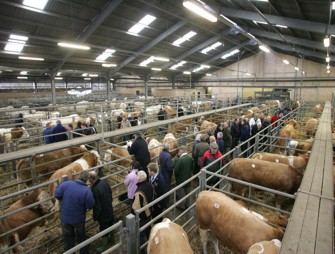
EVALUATION
1. Define rearing.
2. Mention three routine management practices you know.
3. State the marketing channels for farm animals and their products in Nigeria.
4. List the processes involved in rearing poultry birds to maturity.
ASSIGNMENT
Junior School Agriculture Workbook 2, chapter 10, No 26-47 by Anthony et al
READING ASSIGNMENT
Junior School Agriculture book 2 chapter 13 pages 165-171by Anthony et al
REFERENCE TEXTS
1. Junior School Agriculture book 2 by Anthony et al
2. Essentials of Agricultural Science for JSS by EC Anie.
CONTENTS: i. Housing and Feeding
ii. Hygiene and Medication
iii. Rearing of Farm animals to maturity
SUB-TOPIC 1: HOUSING AND FEEDING
For effective production of farm animals, it is important to have convenient and durable buildings, good feeds and equipments.
HOUSING: Ruminants such as cattle, sheep and goats do not require special housing. However, under intensive system, they are provided with barns, sheds/shelter and fences to protect them from adverse weather conditions such as severe cold, heat, wind and rain; it also protect them from thieves, straying and keep the incidence of pests and diseases at barest minimum.
Non-ruminant animals such as pig, poultry etc require well-built houses of which floor are made of concrete (to control internal parasites) and roof made of iron or asbestos sheet. There are three types of housing in pig management. They are farrowing house, breeding house and fattening house. For poultry, we have brooder house for rearing chicks, growers’ house for raising growers and deep litter/battery cages for rearing growers and layers respectfully. In rabbit management, well-ventilated and properly lighted houses called hutches (constructed of wire mesh, wood or both) are provided to keep them from cold, wind, heat and rain.

FEEDING: Farm animals require good feeding for optimum production. They need all essential feed nutrients for growth, good health and productivity. Different farm animals require different feeds at different times depending on: a. purpose of production b. digestive system c. age d. cost of feed e. seasons of growth f. stage of growth/development.
Ruminant animals grow well on pasture because of their complex stomach and the presence of bacteria in their rumen which can digest forages. However, concentrate feed and supplements should be given them to improve their production.
Non-ruminant animals on the other hand need concentrate feed because of their simple stomach that cannot digest roughages. Creep feed/pellets, weaners mash, lactating ration, flushing/steaming up, fatteners/finishers mash and breeders mash are examples of concentrates for feeding pigs. Chicks mash, Growers mash, Layers mash, Broilers starter and Broilers finisher are examples of poultry feeds.


FEEDING/REARING EQUIPMENT
CATTLE: These include shade, stock, breeding rack, dipping vat/spraying equipment, calf creep, mineral feeder, scales and silos.
SHEEP/GOAT: These are grain trough, water trough and dipping vat.
POULTRY: Water trough, feeding trough, grit container, dip equipment, brooder, incubators
PIG: Wallow, feeding trough, water trough, brooder.
EVALUATION
1. State three houses for cattle, sheep and goat.
2. The well-ventilated house for rearing rabbit is known as……
3. List five factors that determine feeding of farm animals.
SUB-TOPIC 2: HYGIENE AND MEDICATION
In livestock farming, emphasis is placed on prevention rather than cure/control. This is to prevent economic loss and time wastage. All farm animals should therefore be provided with clean and well-ventilated housing, dry bedding and good feeds. The following are preventive measures to be taken:
1. Animals’ pens, feeding and water troughs should be cleaned daily.
2. Examine the animals regularly for any sign of pests and diseases.
3. Vaccinate the animals at the appropriate time against viral and bacterial diseases.
4. Isolate the sick/diseased animals from the healthy ones.
5. Disinfect the pens at regular interval especially before the arrival of new stock.
6. Deworm the animals against endo-parasites and delouse/spray them against ecto-parasites.
7. Remove and burn/bury the dead animals.
8. Contact Vet doctor in case of serious disease infection.
9. Remove contaminated feed, beddings and faeces from the pen.
10. Debeak the birds to prevent pecking and egg-sucking.


EVALUATION
1. Why is prevention better than cure?
2. State five preventive measures to be observed in by livestock farmers.
3. Who is the specialist in treating animals’ diseases?
SUB-TOPIC 3: REARING OF FARM ANIMALS TO MATURITY
Rearing is the sum total of all the activities or processes involved in bringing farm animals to maturing. These processes include:
1. For mammals such as cattle, sheep, goat, pig, rabbit etc, rearing involve three major periods
i. Breeding (mating and pregnancy period) to parturition (production of young ones).

ii. Calves/lambs/kids/piglets/kittens to weaning.(Routine management practices like dehorning, tattooing[branding], castration etc) are carried out during this period.

iii. Weaning to finishing/fattening.

2. For non-mammals like poultry, rearing involves
i. Breeding (mating and laying of eggs).

ii. Incubation and candling.

iii. Hatching and sexing.

iv. Brooding.(Rearing of chicks i.e pullet chicks and or broiler chicks in deep litter houses)

v. Grower and finisher stage (Rear in deeper litter houses).

vi. Layers stage (Rear in battery cages).

MATURITY AGE AND MARKET SIZE/WEIGHT OF FARM ANIMALS
Animals Age (months) Weight (kg)
Cattle 12-20 200-360
Sheep 8-12 35-45
Goat 10-14 40-60
Pig 7 60-70
Rabbit 4-6 4-5
Poultry 9-12 weeks 2.5-3
MARKETING OF LIVESTOCK AND LIVESTOCK PRODUCTS
In most West African countries including Nigeria, the Northern part supplies the major quantity of meat consumed by the South. Live animals are slaughtered, dressed and frozen/processed and sold for consumption. The marketing channels are thus: Producer > Middle men (wholesalers and retailers) > Consumers.

EVALUATION
1. Define rearing.
2. Mention three routine management practices you know.
3. State the marketing channels for farm animals and their products in Nigeria.
4. List the processes involved in rearing poultry birds to maturity.
ASSIGNMENT
Junior School Agriculture Workbook 2, chapter 10, No 26-47 by Anthony et al
READING ASSIGNMENT
Junior School Agriculture book 2 chapter 13 pages 165-171by Anthony et al
REFERENCE TEXTS
1. Junior School Agriculture book 2 by Anthony et al
2. Essentials of Agricultural Science for JSS by EC Anie.
WEEK 3
TOPIC: FARM ANIMAL PARASITES
CONTENTS: i. Definition and classification of parasites
ii. Ecto-parasites and Endo-parasites
iii. Effects of parasites on farm animals.
SUB-TOPIC 1: DEFINITION AND CLASSIFICATION OF PARASITES
A parasite is an organism (plant or animal) which live in and derive all its nourishment such as food, shelter and protection from another organism called host, giving back nothing. This relationship between the parasite and the host is known as parasitism. Only the parasite benefits from this association while the host suffers. Parasite is usually smaller (special feature which makes them stick to the body of their hosts without falling off easily) but the host is bigger and stronger.
CLASSIFICATION OF FARM ANIMAL PARASITE
There are two major classes of parasites depending on where they live either on or in the host.
Ecto-parasite- (Those which live on their host).
Endo-parasite- (Those which live inside their host).
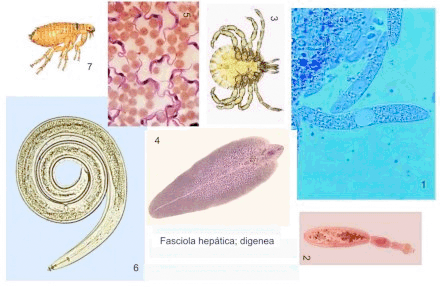
EVALUATION
1. What are parasites?
2. What is parasitism?
3. State the two classes of parasites we have.
4.Mention the special feature that enables the parasites live successfully on their hosts.
SUB-TOPIC 2: ECTO-PARASITES AND ENDO-PARASITES
1. ECTO-PARASITES: These are parasites found outside the body of farm animals, suck their blood and transmit diseases to them. Examples of ecto-parasites are ticks, lice, mites, fleas and flies. All these ecto-parasites belong to the group of animals called arthropods.

2. ENDO-PARASITES: These are parasites that live inside the body of farm animals and obtain food, shelter and protection. They live mostly in the intestine, bile duct, liver, heart, blood, lung, gall bladder and body tissue. Examples of endo-parasites include tape worm, round worm, liver fluke and bladder worm (larvae of tape worm)
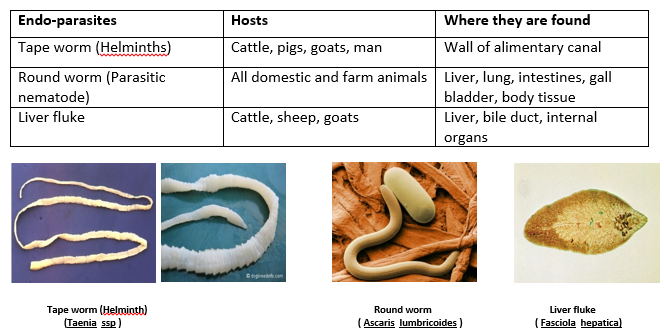
EVALUATION
1. Differentiate between Ecto-parasites and Endo-parasites
2. State five Ecto-parasites and their hosts.
3. Mention where each of these is found in the body of animals: tape worm, round worm and liver fluke.
SUB-TOPIC 3: EFFECTS OF PARASITES ON FARM ANIMALS
Parasites are of economic importance in agriculture. The effects of parasites on farm animals are as follow:
Loss of appetite
Loss of condition and weight
Diarrhoea
Coughing
Difficult breathing
Fever
Low production
Economic loss
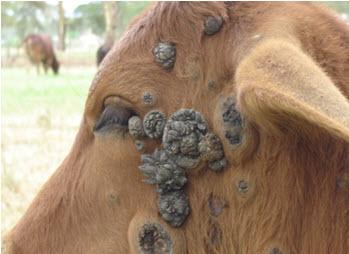
EVALUATION
1. Mention seven effects of parasites on farm animals.
ASSIGNMENT
Junior Secondary Agriculture Work book 2, chapter 13 No 1-14 pages 113-116
READING ASSIGNMENT
Junior Secondary Agriculture book 2, chapter13 pages 169 & 172 by Anthony et al
REFERENCE TEXTS
Junior Secondary Agriculture book 2 by Anthony et al
Essentials of Agricultural Science for JSS by EC Anie
CONTENTS: i. Definition and classification of parasites
ii. Ecto-parasites and Endo-parasites
iii. Effects of parasites on farm animals.
SUB-TOPIC 1: DEFINITION AND CLASSIFICATION OF PARASITES
A parasite is an organism (plant or animal) which live in and derive all its nourishment such as food, shelter and protection from another organism called host, giving back nothing. This relationship between the parasite and the host is known as parasitism. Only the parasite benefits from this association while the host suffers. Parasite is usually smaller (special feature which makes them stick to the body of their hosts without falling off easily) but the host is bigger and stronger.
CLASSIFICATION OF FARM ANIMAL PARASITE
There are two major classes of parasites depending on where they live either on or in the host.
Ecto-parasite- (Those which live on their host).
Endo-parasite- (Those which live inside their host).

EVALUATION
1. What are parasites?
2. What is parasitism?
3. State the two classes of parasites we have.
4.Mention the special feature that enables the parasites live successfully on their hosts.
SUB-TOPIC 2: ECTO-PARASITES AND ENDO-PARASITES
1. ECTO-PARASITES: These are parasites found outside the body of farm animals, suck their blood and transmit diseases to them. Examples of ecto-parasites are ticks, lice, mites, fleas and flies. All these ecto-parasites belong to the group of animals called arthropods.

2. ENDO-PARASITES: These are parasites that live inside the body of farm animals and obtain food, shelter and protection. They live mostly in the intestine, bile duct, liver, heart, blood, lung, gall bladder and body tissue. Examples of endo-parasites include tape worm, round worm, liver fluke and bladder worm (larvae of tape worm)

EVALUATION
1. Differentiate between Ecto-parasites and Endo-parasites
2. State five Ecto-parasites and their hosts.
3. Mention where each of these is found in the body of animals: tape worm, round worm and liver fluke.
SUB-TOPIC 3: EFFECTS OF PARASITES ON FARM ANIMALS
Parasites are of economic importance in agriculture. The effects of parasites on farm animals are as follow:
Loss of appetite
Loss of condition and weight
Diarrhoea
Coughing
Difficult breathing
Fever
Low production
Economic loss

EVALUATION
1. Mention seven effects of parasites on farm animals.
ASSIGNMENT
Junior Secondary Agriculture Work book 2, chapter 13 No 1-14 pages 113-116
READING ASSIGNMENT
Junior Secondary Agriculture book 2, chapter13 pages 169 & 172 by Anthony et al
REFERENCE TEXTS
Junior Secondary Agriculture book 2 by Anthony et al
Essentials of Agricultural Science for JSS by EC Anie
WEEK 4
TOPIC: CONTROL OF FARM ANIMALS PARASITES
CONTENTS: i. Signs of Parasites.
ii. Control of Ecto-parasites and Endo-parasites.
SUB-TOPIC 1: SIGNS OF PARASITES
Parasites affect farm animals in many ways. They damage the skin of their hosts, suck blood and transmit diseases which make the animals sick. When parasites attack farm animals, the animals may show the following signs:
Restlessness
Scratching/Itching
Nervousness
Weakness
Loss of appetite
Anaemia/Loss of blood
Loss of weight
Retarded growth
Sores on the skin and ugly looking skin
Reduced reproduction.
EVALUATION
1. What are parasites?
2. State seven signs of parasites in farm animals.
SUB-TOPC 2: CONTROL OF ECTO-PARASITES AND ENDO-PARASITES

EVALUATION
1. State five ways of controlling ecto-parasites.
2. Mention six methods of controlling endo-parasites.
ASSIGNMENT
Junior Secondary Agriculture Workbook 2 chapter 13 pages 135-139
READING ASSIGNMENT
Junior Secondary Agriculture book 2 chapter 13 pages 172-177 by Anthony et al
REFERENCE TEXTS
Junior Secondary Agriculture book 2 by Anthony et al
Essentials of Agricultural Science for JSS by EC Anie
CONTENTS: i. Signs of Parasites.
ii. Control of Ecto-parasites and Endo-parasites.
SUB-TOPIC 1: SIGNS OF PARASITES
Parasites affect farm animals in many ways. They damage the skin of their hosts, suck blood and transmit diseases which make the animals sick. When parasites attack farm animals, the animals may show the following signs:
Restlessness
Scratching/Itching
Nervousness
Weakness
Loss of appetite
Anaemia/Loss of blood
Loss of weight
Retarded growth
Sores on the skin and ugly looking skin
Reduced reproduction.
EVALUATION
1. What are parasites?
2. State seven signs of parasites in farm animals.
SUB-TOPC 2: CONTROL OF ECTO-PARASITES AND ENDO-PARASITES

EVALUATION
1. State five ways of controlling ecto-parasites.
2. Mention six methods of controlling endo-parasites.
ASSIGNMENT
Junior Secondary Agriculture Workbook 2 chapter 13 pages 135-139
READING ASSIGNMENT
Junior Secondary Agriculture book 2 chapter 13 pages 172-177 by Anthony et al
REFERENCE TEXTS
Junior Secondary Agriculture book 2 by Anthony et al
Essentials of Agricultural Science for JSS by EC Anie
WEEK 5
TOPIC: DISEASE CAUSING ORGANISMS
CONTENTS: i. Definition of Disease Causing Organisms.
ii. Group of Disease Causing Organisms and Their Mode of Transmission.
iii. Basic Symptoms of disease-causing organisms.
SUB-TOPIC 1: DEFINITION OF DISEASE CAUSING ORGANISMS
DISEASE: means a change in the normal functioning or well-being of any plant or animal caused by pathogenic organism which results in observable symptoms.
PATHOGENIC ORGANISMS: (Pathogens) refer to disease-causing organisms. Diseases cause increase in cost of production, low yield, economic loss etc.
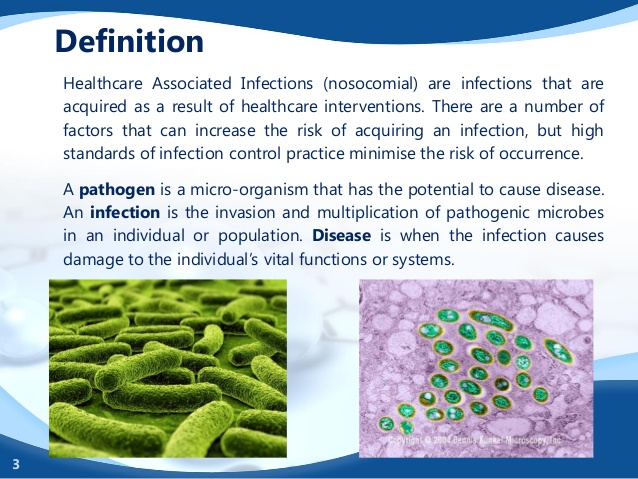
EVALUATION
1. What do you understand by the term disease in farm animals?
2. Define pathogenic organisms.
SUB-TOPIC 2: GROUP OF DISEASE-CAUSING ORGANISMS.
Diseases are caused by two main factors. These are (i) Pathogenic (living) factors and (ii) Non-pathogenic (non-living) factors.
Disease-causing organisms (pathogens): These are organisms that produce diseases in plants or animals under natural conditions. There are five groups of disease-causing organisms. They are:
Bacteria
Virus
Protozoa
Fungi
Worms (parasitic nematodes)
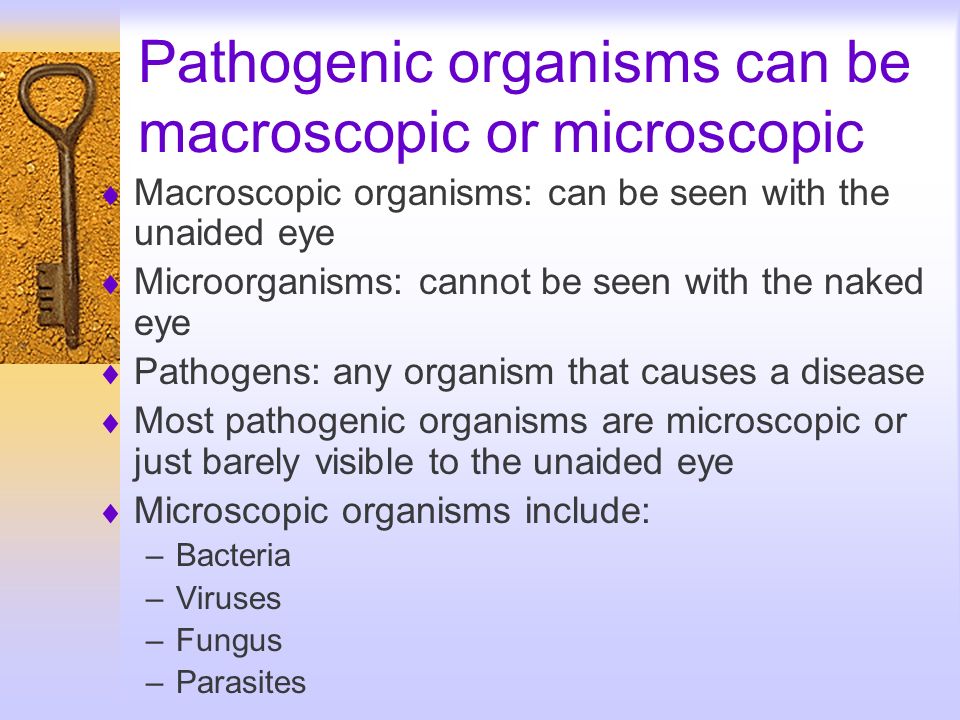
MODE OF TRANSMISSION OF DISEASE-CAUSING ORGANISMS.
Disease-causing organisms can transmit diseases to farm animals through the following mediums and modes:
Air
Water
Physical/Direct contact
Bites from insects (injury)
Nutritional disorder.
EVALUATION
1. How many groups of disease-causing organisms do we have?
2. State the disease-causing organisms you know.
3. Mention four mode of transmission of disease-causing organisms.

SUB-TOPIC 3: BASIC SYMPTOMS OF DISEASES
Symptoms refer to signs or indications of the existence or presence of bodily disorder. It also means evident reaction by a plant or an animal to a pathogen. Common symptoms of diseases in animals include the following:
Rise in body temperature
Loss of appetite
Loss of weight
Loss of hair
Loss of condition
Stunted growth
Reduced food utilization
Anaemia/Loss of blood
Inflammation of/Enlarged udder
Abortion/Premature birth
Sores and exudates from the skin
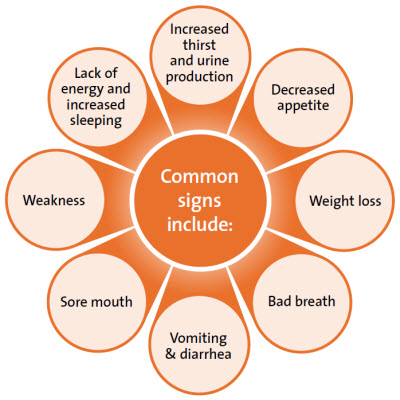

EVALUATION
1. What is a disease symptom?
2. List seven common symptoms of a farm animal disease.
ASSIGNMENT
Junior Secondary Agriculture Work book 2, chapter 13 No 15-18 pages 116-117
READING ASSIGNMENT
Junior Secondary Agriculture book 2, chapter13 pages 169 & 172 by Anthony et al
REFERENCE TEXTS
Junior Secondary Agriculture book 2 by Anthony et al
Essentials of Agricultural Science for JSS by EC Anie
CONTENTS: i. Definition of Disease Causing Organisms.
ii. Group of Disease Causing Organisms and Their Mode of Transmission.
iii. Basic Symptoms of disease-causing organisms.
SUB-TOPIC 1: DEFINITION OF DISEASE CAUSING ORGANISMS
DISEASE: means a change in the normal functioning or well-being of any plant or animal caused by pathogenic organism which results in observable symptoms.
PATHOGENIC ORGANISMS: (Pathogens) refer to disease-causing organisms. Diseases cause increase in cost of production, low yield, economic loss etc.

EVALUATION
1. What do you understand by the term disease in farm animals?
2. Define pathogenic organisms.
SUB-TOPIC 2: GROUP OF DISEASE-CAUSING ORGANISMS.
Diseases are caused by two main factors. These are (i) Pathogenic (living) factors and (ii) Non-pathogenic (non-living) factors.
Disease-causing organisms (pathogens): These are organisms that produce diseases in plants or animals under natural conditions. There are five groups of disease-causing organisms. They are:
Bacteria
Virus
Protozoa
Fungi
Worms (parasitic nematodes)

MODE OF TRANSMISSION OF DISEASE-CAUSING ORGANISMS.
Disease-causing organisms can transmit diseases to farm animals through the following mediums and modes:
Air
Water
Physical/Direct contact
Bites from insects (injury)
Nutritional disorder.
EVALUATION
1. How many groups of disease-causing organisms do we have?
2. State the disease-causing organisms you know.
3. Mention four mode of transmission of disease-causing organisms.

SUB-TOPIC 3: BASIC SYMPTOMS OF DISEASES
Symptoms refer to signs or indications of the existence or presence of bodily disorder. It also means evident reaction by a plant or an animal to a pathogen. Common symptoms of diseases in animals include the following:
Rise in body temperature
Loss of appetite
Loss of weight
Loss of hair
Loss of condition
Stunted growth
Reduced food utilization
Anaemia/Loss of blood
Inflammation of/Enlarged udder
Abortion/Premature birth
Sores and exudates from the skin


EVALUATION
1. What is a disease symptom?
2. List seven common symptoms of a farm animal disease.
ASSIGNMENT
Junior Secondary Agriculture Work book 2, chapter 13 No 15-18 pages 116-117
READING ASSIGNMENT
Junior Secondary Agriculture book 2, chapter13 pages 169 & 172 by Anthony et al
REFERENCE TEXTS
Junior Secondary Agriculture book 2 by Anthony et al
Essentials of Agricultural Science for JSS by EC Anie
WEEK 6
TOPIC: MODE OF TRANSMISSION OF DISEASE CAUSING ORGANISMS
CONTENT:
• Groups of disease causing organisms
• Mode of transmission
• Examples of disease
DISEASES OF FARM ANIMALS AND THEIR TRANSMISSION
A. BACTERIAL DISEASE
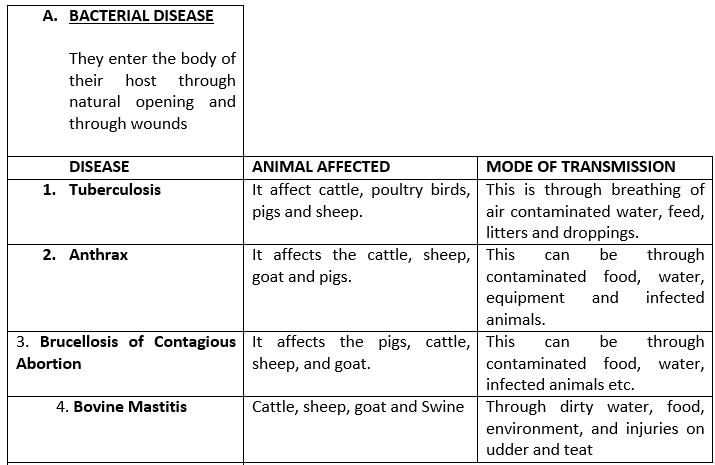
B. FUNGI DISEASES
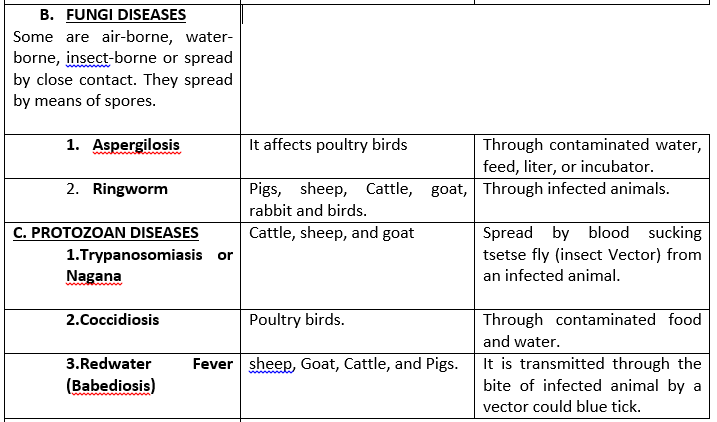
C.VIRAL DISEASE
These are transmitted by insect vectors, direct contact, or uses of infected materials. They are highly contagious and deadly diseases.
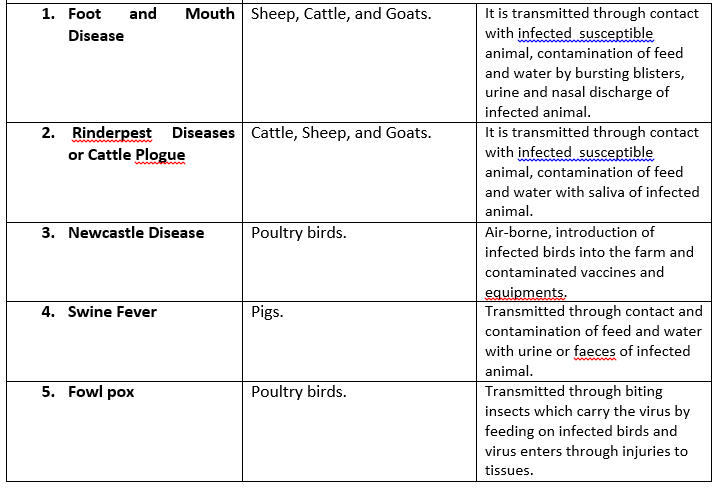
EVALUATION
• Name 2 viral, 2 bacterial and 2 fungal disease that attack named farm animals
• List 2 protozoan diseases of farm animals.
ASSIGNMENT
Name 2 viral, 2 bacterial, 2 fungal and protozoan diseases that attack named farm animals and state their mode of transmission.
READING ASSIGNMENT
Intensive Agricultural Science by E.U. Okoro Pg. 131 to 134
REFERENCE TEXTS
1.Junior Secondary Agriculture For Nigerian Schools By Anthony Youdeowei et al
2 .Intensive Agricultural science For JSS 1-3 By E.U Okaro
3 Essential Agricultural Science by O.A Iwena
CONTENT:
• Groups of disease causing organisms
• Mode of transmission
• Examples of disease
DISEASES OF FARM ANIMALS AND THEIR TRANSMISSION
A. BACTERIAL DISEASE

B. FUNGI DISEASES

C.VIRAL DISEASE
These are transmitted by insect vectors, direct contact, or uses of infected materials. They are highly contagious and deadly diseases.

EVALUATION
• Name 2 viral, 2 bacterial and 2 fungal disease that attack named farm animals
• List 2 protozoan diseases of farm animals.
ASSIGNMENT
Name 2 viral, 2 bacterial, 2 fungal and protozoan diseases that attack named farm animals and state their mode of transmission.
READING ASSIGNMENT
Intensive Agricultural Science by E.U. Okoro Pg. 131 to 134
REFERENCE TEXTS
1.Junior Secondary Agriculture For Nigerian Schools By Anthony Youdeowei et al
2 .Intensive Agricultural science For JSS 1-3 By E.U Okaro
3 Essential Agricultural Science by O.A Iwena
WEEK 7
TOPIC: CROPS PLANT DISEASE
CONTENTS:
• Definition of disease
• Group of plant disease causing organisms
• Basic symptoms of the diseases
DEFINITION OF DISEASE
Disease is any deviation from the normal functions of the tissue, organ or system of the body on organism.
Plants can suffer from different kinds of diseases which can kill them or reduce their yield reduce the quantity of produce as well as its market value.
Diseases are usually caused by organisms called pathogens. The most important of these pathogenic in plant fall into four main groups:
• Bacteria
• Fungi
• Viruses
• Nematodes

EVALUATION
• What is disease?
• List the four groups of plants’ diseases.
TYPES OF PLANT DISEASE ORGANISMS
Bacteria: These are microscopic unicellular organism that can exist in water, plants, dust particles, damp soils sewage. They can multiply rapidly and usually enter their hosts through openings like wounds, stomata, flowers, and fruits
Some bacterial are useful to man in agriculture, especially the rhizobia bacteria which live in root modules of leguminous crops. They fix nitrogen, thereby enriching the soil with nitrogen.
DISEASES OF PLANTS AND THEIR MODE OF TRANSMISSION
BACTERIAL DISEASE
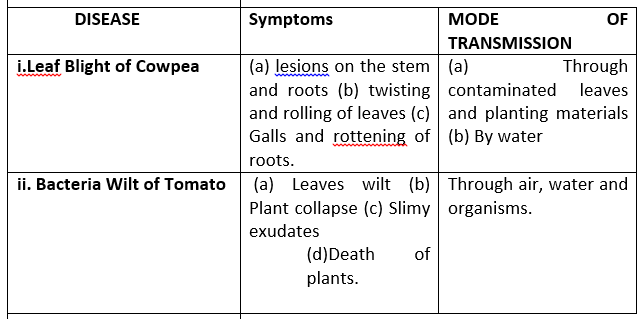
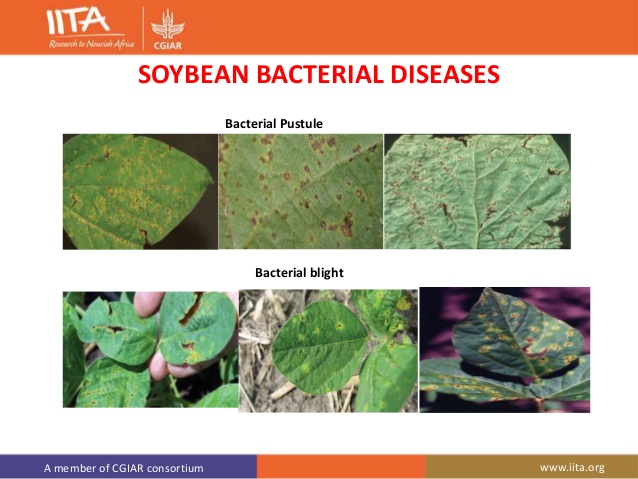
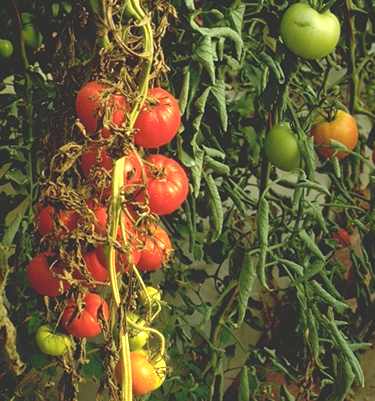
FUNGI
Fungi are classified as plants because they have a protoplasm enclosed in a cell wall, but differ from plants because they have no chlorophyll, and so, cannot manufacture their own food. Therefore, they live as parasite on living organisms like plants where they cause diseases or as saprophytes on decaying matter. Their body consists of a mass of inter-woven, branching thread- like hyphae called mycelium. Fungi reproduce by means of spores. The spores can b carried to the plant by wind, rain, storm, rain splash, insects or seeds and other agent.
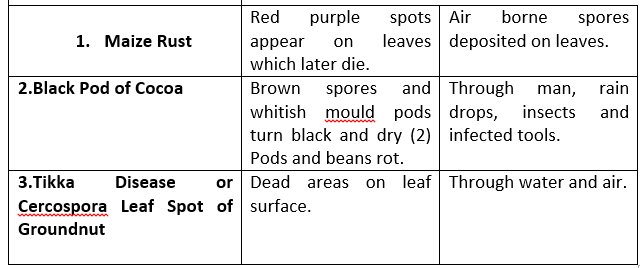

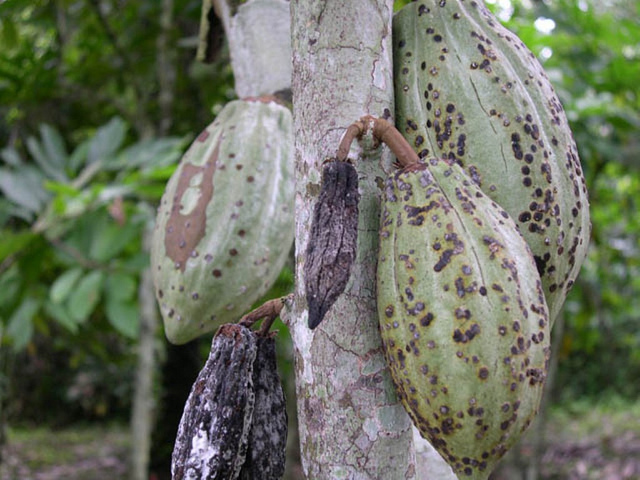

EVALUATION
Mention one fungal disease and state its symptoms
Name one bacterial disease and state its symptoms
Virus: Viruses are so tiny that they can only be seen by an electron microscope. They are parasitic, reproducing themselves in the living cells of their host, thereby causing diseases.
VIRUSES
Viruses are usually spread by direct contact, or are picked up from contaminated materials. They are transmitted from plant to plant by piercing and sucking insect like aphids, and mealy bugs. These insects are, therefore, called vectors.
The symptoms of virus disease include molting of leaves, yellowing of leaves, vein clearing, distortion of leaves, shortening of internodes and stunted growth.
Examples of viral diseases
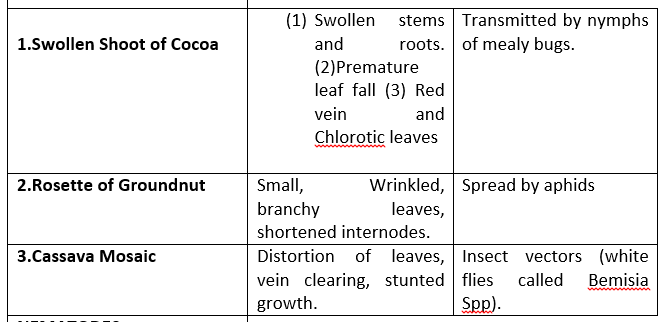


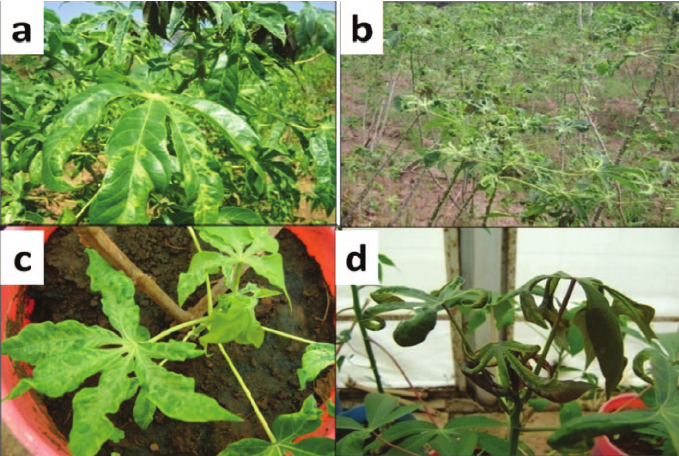
NEMATODES
Nematodes are small worm- like animals capable of limited movement. Some are saprophytes, while some are parasites. They infect underground or aerial parts of plants and inject toxic substances, thereby causing all sorts of damages and symptoms, examples: galls on roots which block the passage of water and mineral salts, leading to yellowing of leaves and reduced production.

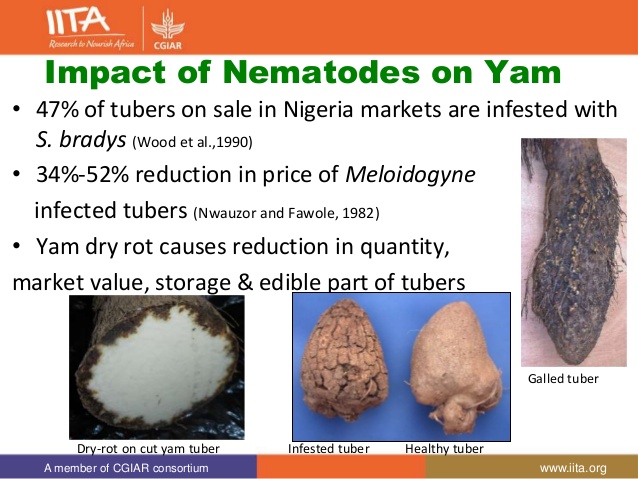
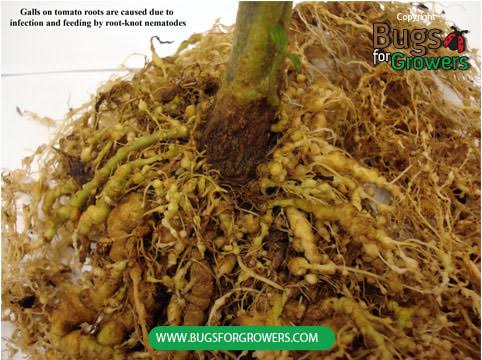
EVALUATION
• Mention one viral disease and give its symptoms
• Name a disease caused by nematodes and state it symptoms
ASSIGNMENT
• State the organisms that cause each of these diseases:
• Leaf blight of cocoa
• Blackpod of cocoa
• Leaf mosaic of cassava
• Root knot of tomato
• Swollen Shoot of Cocoa
• Leaf blight of cowpea
READING ASSIGNMENT
1.New Intensive Agricultural Science by E.U. Okoro pages
2.Junior Secondary Agriculture For Nigerian Schools By Anthony Youdeowei et al
3 .Intensive Agricultural science For JSS 1-3 By E.U Okaro
4 Essential Agricultural Science by O.A Iwena
CONTENTS:
• Definition of disease
• Group of plant disease causing organisms
• Basic symptoms of the diseases
DEFINITION OF DISEASE
Disease is any deviation from the normal functions of the tissue, organ or system of the body on organism.
Plants can suffer from different kinds of diseases which can kill them or reduce their yield reduce the quantity of produce as well as its market value.
Diseases are usually caused by organisms called pathogens. The most important of these pathogenic in plant fall into four main groups:
• Bacteria
• Fungi
• Viruses
• Nematodes

EVALUATION
• What is disease?
• List the four groups of plants’ diseases.
TYPES OF PLANT DISEASE ORGANISMS
Bacteria: These are microscopic unicellular organism that can exist in water, plants, dust particles, damp soils sewage. They can multiply rapidly and usually enter their hosts through openings like wounds, stomata, flowers, and fruits
Some bacterial are useful to man in agriculture, especially the rhizobia bacteria which live in root modules of leguminous crops. They fix nitrogen, thereby enriching the soil with nitrogen.
DISEASES OF PLANTS AND THEIR MODE OF TRANSMISSION
BACTERIAL DISEASE



FUNGI
Fungi are classified as plants because they have a protoplasm enclosed in a cell wall, but differ from plants because they have no chlorophyll, and so, cannot manufacture their own food. Therefore, they live as parasite on living organisms like plants where they cause diseases or as saprophytes on decaying matter. Their body consists of a mass of inter-woven, branching thread- like hyphae called mycelium. Fungi reproduce by means of spores. The spores can b carried to the plant by wind, rain, storm, rain splash, insects or seeds and other agent.




EVALUATION
Mention one fungal disease and state its symptoms
Name one bacterial disease and state its symptoms
Virus: Viruses are so tiny that they can only be seen by an electron microscope. They are parasitic, reproducing themselves in the living cells of their host, thereby causing diseases.
VIRUSES
Viruses are usually spread by direct contact, or are picked up from contaminated materials. They are transmitted from plant to plant by piercing and sucking insect like aphids, and mealy bugs. These insects are, therefore, called vectors.
The symptoms of virus disease include molting of leaves, yellowing of leaves, vein clearing, distortion of leaves, shortening of internodes and stunted growth.
Examples of viral diseases




NEMATODES
Nematodes are small worm- like animals capable of limited movement. Some are saprophytes, while some are parasites. They infect underground or aerial parts of plants and inject toxic substances, thereby causing all sorts of damages and symptoms, examples: galls on roots which block the passage of water and mineral salts, leading to yellowing of leaves and reduced production.



EVALUATION
• Mention one viral disease and give its symptoms
• Name a disease caused by nematodes and state it symptoms
ASSIGNMENT
• State the organisms that cause each of these diseases:
• Leaf blight of cocoa
• Blackpod of cocoa
• Leaf mosaic of cassava
• Root knot of tomato
• Swollen Shoot of Cocoa
• Leaf blight of cowpea
READING ASSIGNMENT
1.New Intensive Agricultural Science by E.U. Okoro pages
2.Junior Secondary Agriculture For Nigerian Schools By Anthony Youdeowei et al
3 .Intensive Agricultural science For JSS 1-3 By E.U Okaro
4 Essential Agricultural Science by O.A Iwena
WEEK 8
TOPIC: CROP PLANT DISEASES
CONTENTS:
• Preventive and control methods
• Effect of disease on crop plant
SUB-TOPIC 1: PREVENTION AND CONTROL OF PLANT DISEASES
Diseases of crop plants can be controlled by the following methods
• Cultural control
• Biological control
• Chemical control
1. CULTURAL CONTROL: This involves the use of: resistant varieties, tillage practices, regular weeding, fallowing, timeliness of planting, pruning, uprooting and burning of infected crops to control and prevent diseases, crop rotation
Crop rotation: A rotation crops prevents build up of the pathogens by breaking their life cycles when new sets of crops are planted in the rotation.
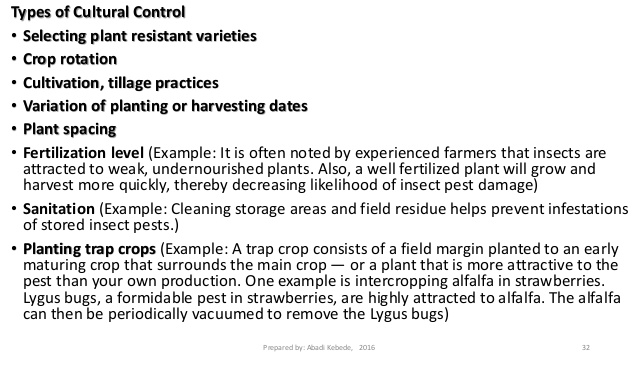
EVALUATION
• List the three control methods of disease of plants.
• List five cultural control methods of diseases of plants
2. BIOLOGICAL CONTROL: This involves the use of natural enemies of the diseases to reduce or totally eliminate the disease. A pathogens natural enemy is used to control it. This is effective with nematodes
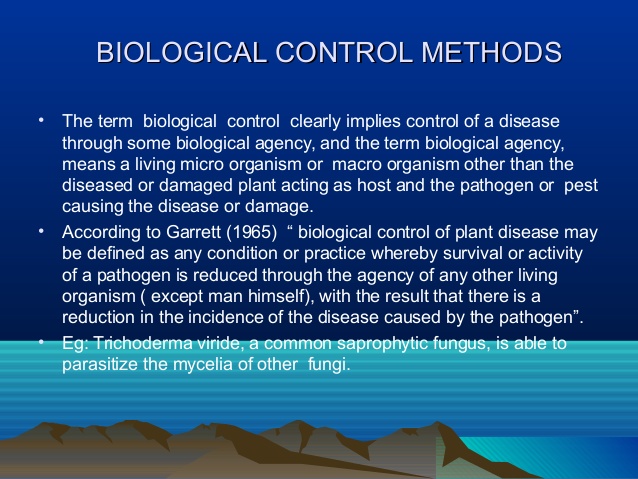
3. CHEMICAL CONTROL: This involves the use of chemicals such as: Insecticide are used to control insect vectors which transmit virus diseases.
Fungicides: are chemicals used to control fungal disease. Eg perenox boardeaux mixture are used to control black pod disease of cocoa.
Agroson and Nemagon are used to control nematodes in the soil.
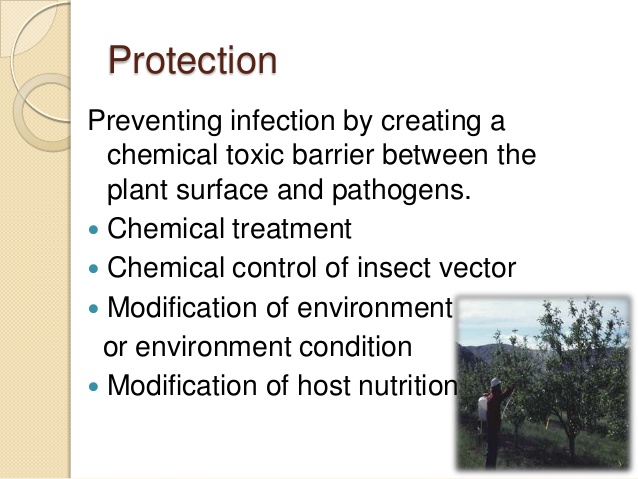
EVALUATION
List three types of chemicals used for controlling the following diseases
• Insects transmitted diseases
• Fungal diseases
• Nematodes
SUB-TOPIC 2: EFFECT OF DISEASE ON CROP PLANTS
• Reduction of yield
• Reduction in quality of produce
• They cause death of the plants
• Destroys the embryo of seeds, and reduces viability
• Reduces storage quantity
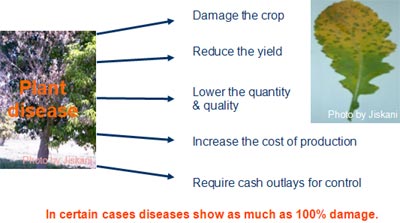
EVALUATION
• Mention four effect of diseases on crops.
ASSIGNMENT
• Name the pathogenic organisms that cause plant diseases
• How can crop diseases be prevented and controlled?
READING ASSIGNMENT:
New Intensive Agricultural Science by E.U. Okoro Pg. 126 to 127
REFERENCE TEXTS
1.Junior Secondary Agriculture For Nigerian Schools By Anthony Youdeowei et al
2 .Intensive Agricultural science For JSS 1-3 By E.U Okaro
3 Essential Agricultural Science by O.A Iwena
CONTENTS:
• Preventive and control methods
• Effect of disease on crop plant
SUB-TOPIC 1: PREVENTION AND CONTROL OF PLANT DISEASES
Diseases of crop plants can be controlled by the following methods
• Cultural control
• Biological control
• Chemical control
1. CULTURAL CONTROL: This involves the use of: resistant varieties, tillage practices, regular weeding, fallowing, timeliness of planting, pruning, uprooting and burning of infected crops to control and prevent diseases, crop rotation
Crop rotation: A rotation crops prevents build up of the pathogens by breaking their life cycles when new sets of crops are planted in the rotation.

EVALUATION
• List the three control methods of disease of plants.
• List five cultural control methods of diseases of plants
2. BIOLOGICAL CONTROL: This involves the use of natural enemies of the diseases to reduce or totally eliminate the disease. A pathogens natural enemy is used to control it. This is effective with nematodes

3. CHEMICAL CONTROL: This involves the use of chemicals such as: Insecticide are used to control insect vectors which transmit virus diseases.
Fungicides: are chemicals used to control fungal disease. Eg perenox boardeaux mixture are used to control black pod disease of cocoa.
Agroson and Nemagon are used to control nematodes in the soil.

EVALUATION
List three types of chemicals used for controlling the following diseases
• Insects transmitted diseases
• Fungal diseases
• Nematodes
SUB-TOPIC 2: EFFECT OF DISEASE ON CROP PLANTS
• Reduction of yield
• Reduction in quality of produce
• They cause death of the plants
• Destroys the embryo of seeds, and reduces viability
• Reduces storage quantity

EVALUATION
• Mention four effect of diseases on crops.
ASSIGNMENT
• Name the pathogenic organisms that cause plant diseases
• How can crop diseases be prevented and controlled?
READING ASSIGNMENT:
New Intensive Agricultural Science by E.U. Okoro Pg. 126 to 127
REFERENCE TEXTS
1.Junior Secondary Agriculture For Nigerian Schools By Anthony Youdeowei et al
2 .Intensive Agricultural science For JSS 1-3 By E.U Okaro
3 Essential Agricultural Science by O.A Iwena
WEEK 9
TOPIC: STORAGE OF FARM PRODUCE
CONTENTS: 1. Definition and purpose of storage of farm produce
2. Types/methods of storage of farm produce, barn, crib, silo
SUB-TOPIC 1: DEFINITION AND PURPOSE OF STORAGE OF FARM PRODUCE
STORAGE: The process of keeping agricultural products for future use as food, raw materials or for sale is known as food storage.
It is necessary to keep the produce in a good state. This later process is known as preservation.
PURPOSE/AIMS OF STORAGE
To ensure that food is available all through the year at affordable prices.
To reduce the amount of food spoilage caused by disease and pest attack.
To ensure that seeds needed for subsequent planting are stored in a viable condition
To preserve the harvested product from loss of quantity and poor sales.
To enable the farmer take advantage of a higher price during the of season in order to make a profit.
Storage and preservation ensure an adequate supply of raw materials to industry for processing.
A farmer who has good storage structures in his farm can afford to cultivate more land.
To make certain food crops available all through the year.
Storage of livestock feeds and feeding stuff from getting spoilt.

EVALUATION
• Define storage
• Give five reasons why we have to store agricultural products.
METHODS OF STORAGE
There are various methods of storage. Some of these are traditional, while others are modern.
They include:
• BARNS: The most traditional and common method of storing fresh yam is barn storage. The barn consists of a network of horizontal and vertical poles. The walls are short and made of mud or cement blocks, and the floor is on the ground. The roof of the barn is made of match or shaded to shelter the yam from hazardous weather conditions. The yam tubers are tied individually to the frame works of poles, with storage in such a way that there is minimal contact between the individual yam tubers. Yam could also be stored in pits on the floor of the barn. The barn requires proper ventilation and moderate temperature.
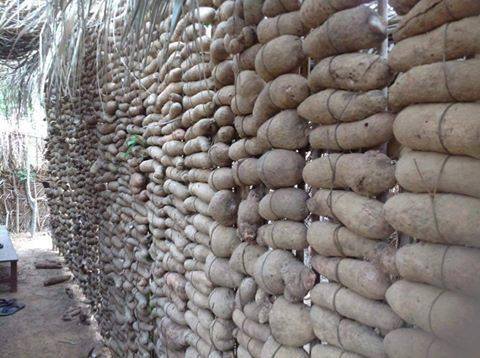
• CRIBS: Cribs are used for storing cereals, especially maize and guinea corn during the dry season. A crib is usually built from local wooden materials in either a rectangular or cylindrical shape and is thatched roofed. The crib is raised 1.22m above the ground and supported on strong pillars. The cribs is, therefore a raised platform which is rectangular in shape.

• RHOMBUS: the rhombus is popular method of storage in Northern Nigeria. It has a spherical or cylindrical shape with domed roof, and is made of mud walls. It is also built to rest on wooden or mud stilts to avoid flood. The floor is made of thatch. The rhombus is used for storing dry grains which have not been threshed.
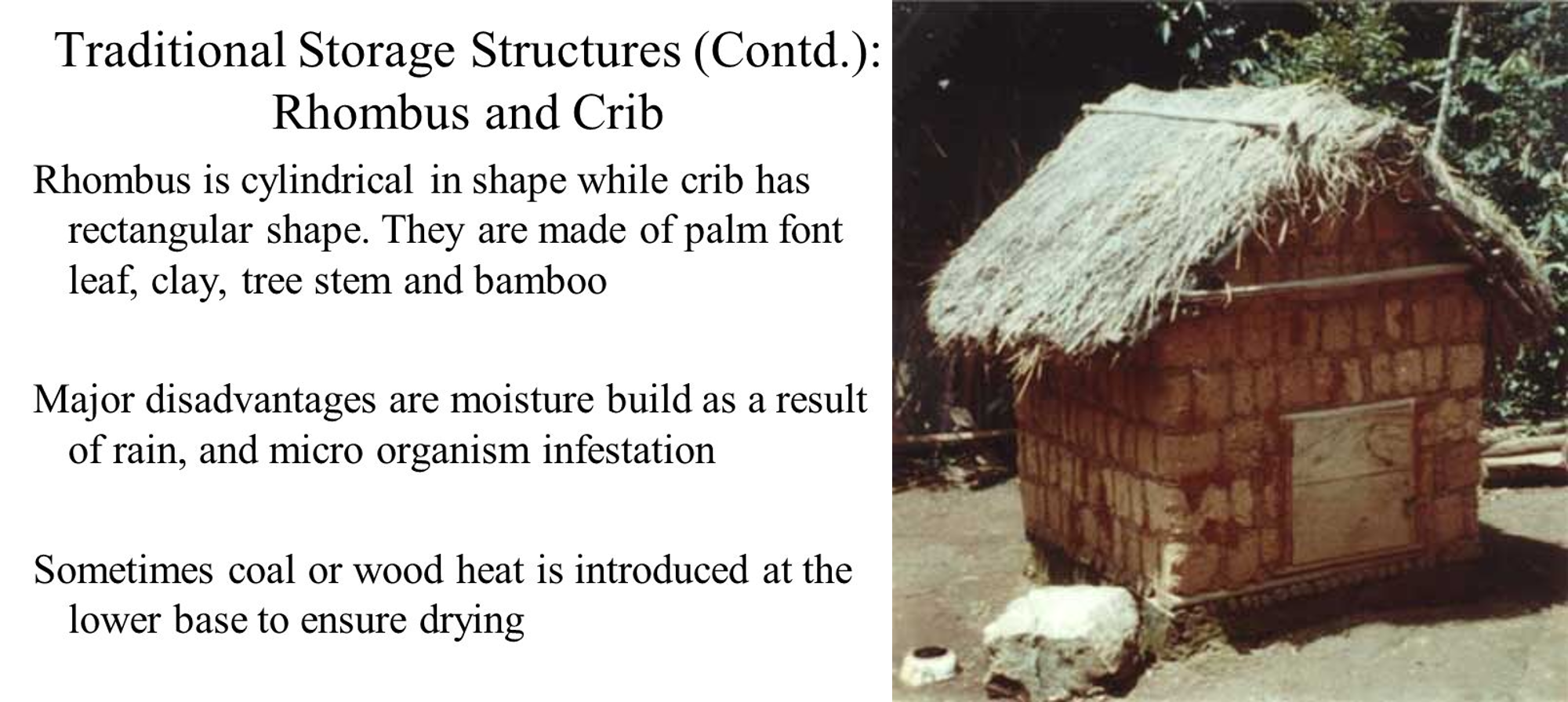
• SILO: This is the most scientific but expensive method of storing grains. It is mostly used by government, large scale farmers and co-operatives societies. Silos are cylindrical or rectangular in shape. They are made from aluminum steel, plywood, rubber, re-in forced concrete or fiber grass materials. The grain or cereal to be stored in a silo must be dry silos must be air-tight. Air –tight silos can preserve grains in good condition for over three years. All insects are killed within three to five days of storage and all fungi and bacteria are kept in control. Silos have high capacity, some can store up to 1000 of grains
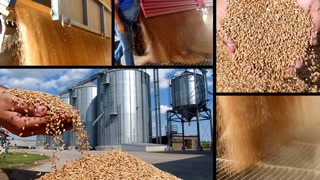
• BIN STORAGE: When we need to store small quantities of grains for some time, we can use devices like tins, drum earthenware pots etc.
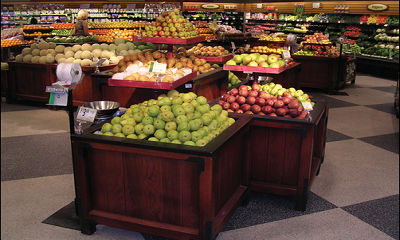
• BAGGING: Dry grains are packed in jute sacks and kept in stores or warehouse constructed of steel, plastered blocks and corrugated Zinc sheets.

• COLD STORAGE: This involves the use of cold storage equipment like refrigerators, freezers and refrigerated lorries and vans and cold-rooms to preserve agricultural products like m meat, eggs, cheese, sausage, yogurt, milk, fruits, vegetable and fish.
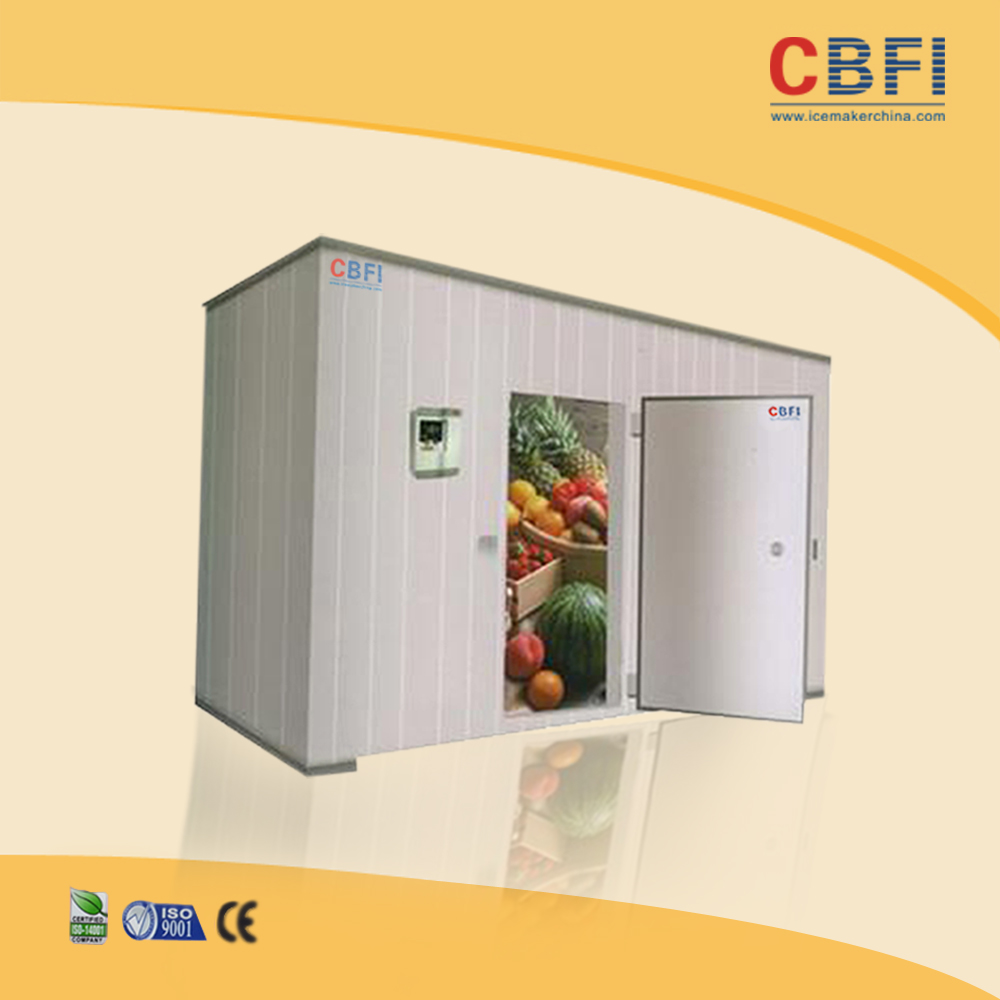
• CANNING: This involves the storage of food items in air-tight cans and tins. The food items are first sterilized by heating them to high temperature to kill any bacteria which can cause decay. Fruits, vegetable, meat, fish and diary products can be canned.
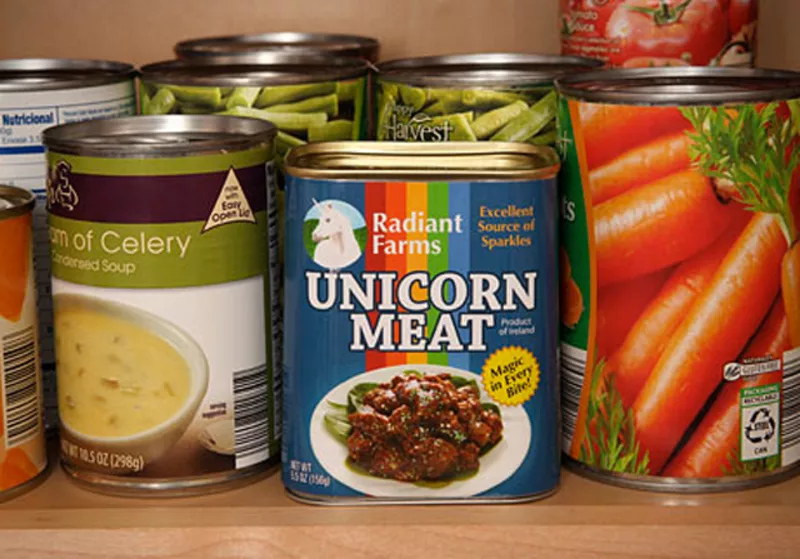
OTHER METHOD OF STORAGE
• Basket
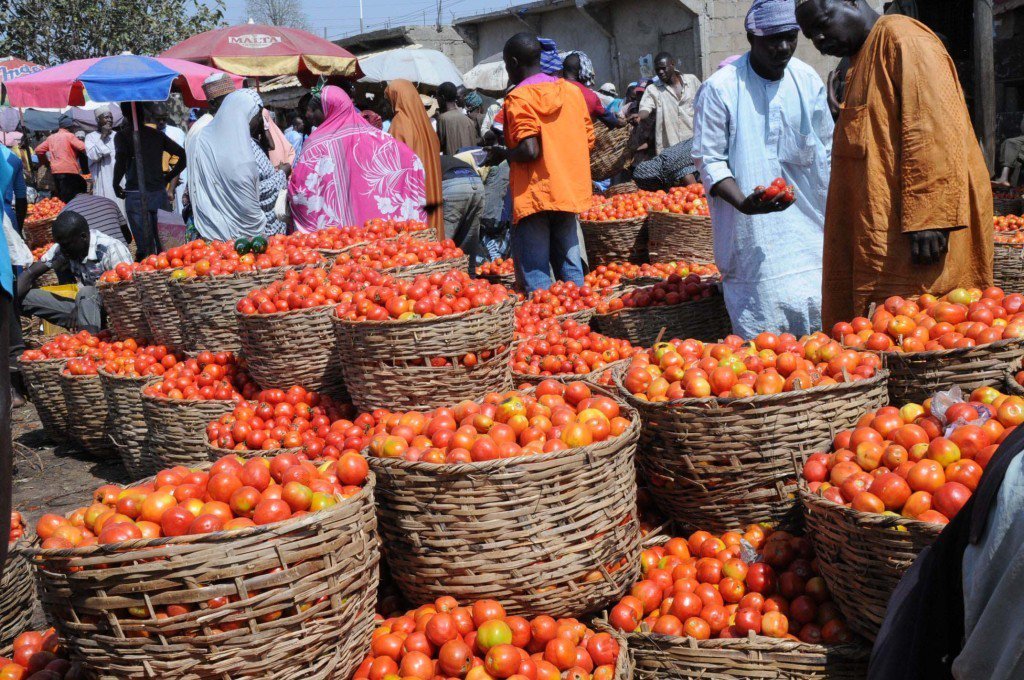
• Gourds and Jerry cans
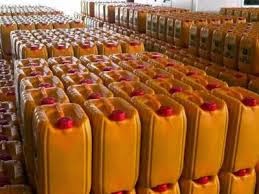
• Underground pit
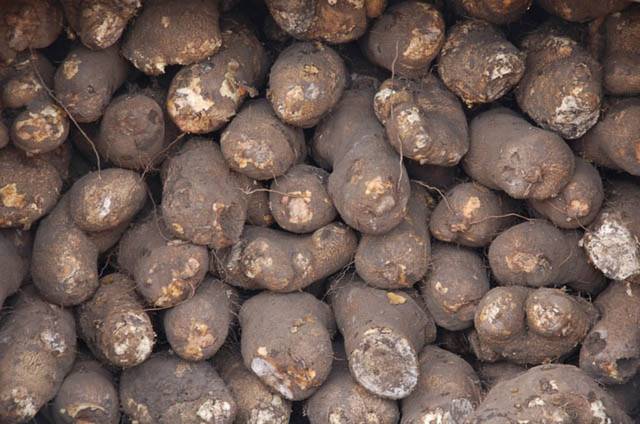
• Underground silos
• Packaging
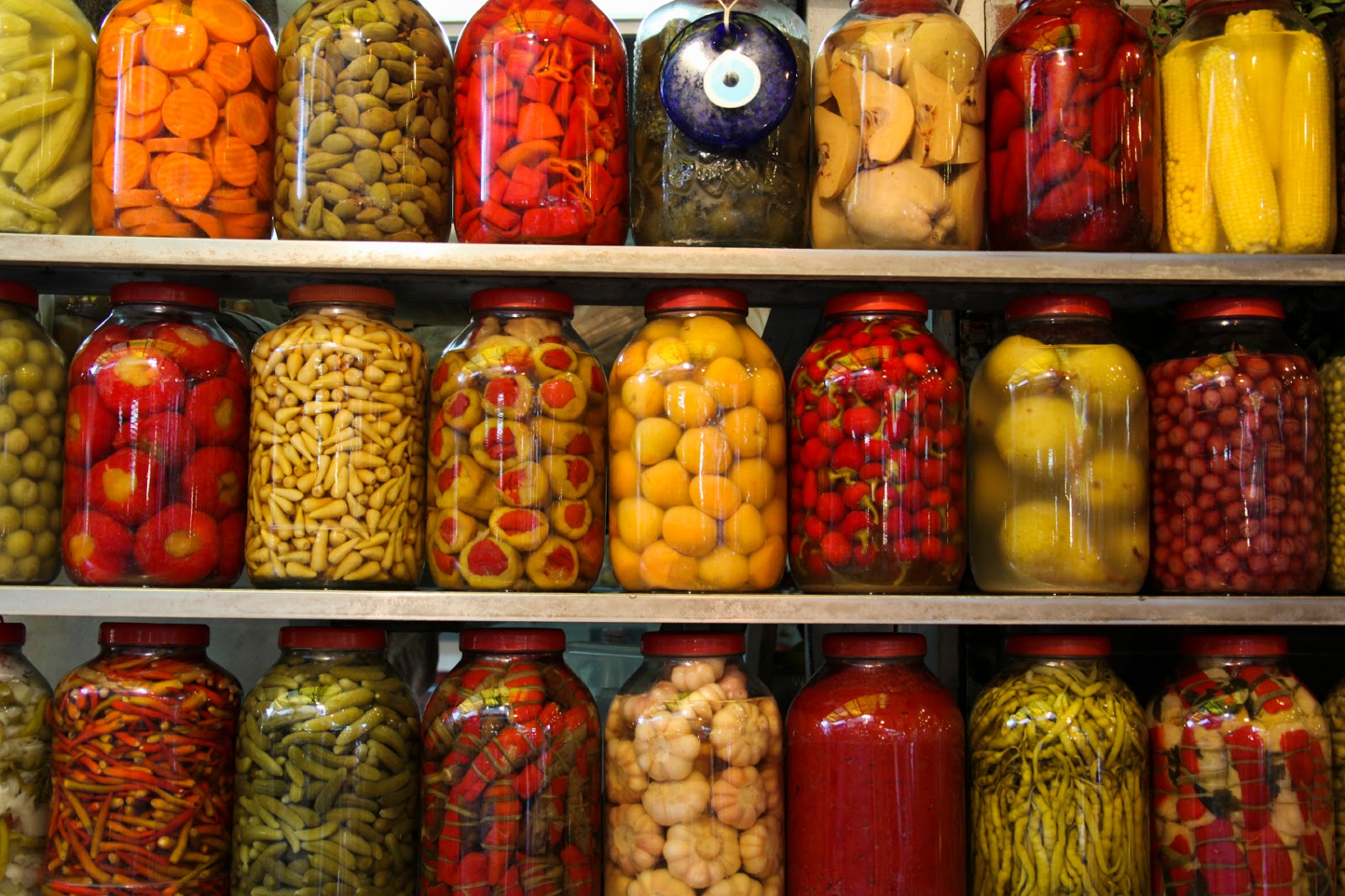
EVALUATION
• Name one storage structure for storing each of these product (a) yam (b) Maize (c) Green vegetable
• Describe how gain crops are stored.
ASSIGNMENT
• Give five reasons why we have to store agricultural products
READING ASSIGNMENT
New Intensive agricultural science by E.U. Okoro pages 15-138
REFERENCE BOOKS
1.Junior Secondary Agriculture For Nigerian Schools By Anthony Youdeowei et al
2 .Intensive Agricultural science For JSS 1-3 By E.U Okaro
3 Essential Agricultural Science by O.A Iwena
CONTENTS: 1. Definition and purpose of storage of farm produce
2. Types/methods of storage of farm produce, barn, crib, silo
SUB-TOPIC 1: DEFINITION AND PURPOSE OF STORAGE OF FARM PRODUCE
STORAGE: The process of keeping agricultural products for future use as food, raw materials or for sale is known as food storage.
It is necessary to keep the produce in a good state. This later process is known as preservation.
PURPOSE/AIMS OF STORAGE
To ensure that food is available all through the year at affordable prices.
To reduce the amount of food spoilage caused by disease and pest attack.
To ensure that seeds needed for subsequent planting are stored in a viable condition
To preserve the harvested product from loss of quantity and poor sales.
To enable the farmer take advantage of a higher price during the of season in order to make a profit.
Storage and preservation ensure an adequate supply of raw materials to industry for processing.
A farmer who has good storage structures in his farm can afford to cultivate more land.
To make certain food crops available all through the year.
Storage of livestock feeds and feeding stuff from getting spoilt.

EVALUATION
• Define storage
• Give five reasons why we have to store agricultural products.
METHODS OF STORAGE
There are various methods of storage. Some of these are traditional, while others are modern.
They include:
• BARNS: The most traditional and common method of storing fresh yam is barn storage. The barn consists of a network of horizontal and vertical poles. The walls are short and made of mud or cement blocks, and the floor is on the ground. The roof of the barn is made of match or shaded to shelter the yam from hazardous weather conditions. The yam tubers are tied individually to the frame works of poles, with storage in such a way that there is minimal contact between the individual yam tubers. Yam could also be stored in pits on the floor of the barn. The barn requires proper ventilation and moderate temperature.

• CRIBS: Cribs are used for storing cereals, especially maize and guinea corn during the dry season. A crib is usually built from local wooden materials in either a rectangular or cylindrical shape and is thatched roofed. The crib is raised 1.22m above the ground and supported on strong pillars. The cribs is, therefore a raised platform which is rectangular in shape.

• RHOMBUS: the rhombus is popular method of storage in Northern Nigeria. It has a spherical or cylindrical shape with domed roof, and is made of mud walls. It is also built to rest on wooden or mud stilts to avoid flood. The floor is made of thatch. The rhombus is used for storing dry grains which have not been threshed.

• SILO: This is the most scientific but expensive method of storing grains. It is mostly used by government, large scale farmers and co-operatives societies. Silos are cylindrical or rectangular in shape. They are made from aluminum steel, plywood, rubber, re-in forced concrete or fiber grass materials. The grain or cereal to be stored in a silo must be dry silos must be air-tight. Air –tight silos can preserve grains in good condition for over three years. All insects are killed within three to five days of storage and all fungi and bacteria are kept in control. Silos have high capacity, some can store up to 1000 of grains

• BIN STORAGE: When we need to store small quantities of grains for some time, we can use devices like tins, drum earthenware pots etc.
• BAGGING: Dry grains are packed in jute sacks and kept in stores or warehouse constructed of steel, plastered blocks and corrugated Zinc sheets.

• COLD STORAGE: This involves the use of cold storage equipment like refrigerators, freezers and refrigerated lorries and vans and cold-rooms to preserve agricultural products like m meat, eggs, cheese, sausage, yogurt, milk, fruits, vegetable and fish.

• CANNING: This involves the storage of food items in air-tight cans and tins. The food items are first sterilized by heating them to high temperature to kill any bacteria which can cause decay. Fruits, vegetable, meat, fish and diary products can be canned.

OTHER METHOD OF STORAGE
• Basket

• Gourds and Jerry cans

• Underground pit

• Underground silos
• Packaging

EVALUATION
• Name one storage structure for storing each of these product (a) yam (b) Maize (c) Green vegetable
• Describe how gain crops are stored.
ASSIGNMENT
• Give five reasons why we have to store agricultural products
READING ASSIGNMENT
New Intensive agricultural science by E.U. Okoro pages 15-138
REFERENCE BOOKS
1.Junior Secondary Agriculture For Nigerian Schools By Anthony Youdeowei et al
2 .Intensive Agricultural science For JSS 1-3 By E.U Okaro
3 Essential Agricultural Science by O.A Iwena
